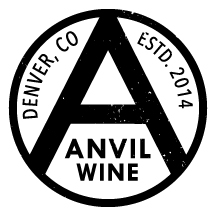Peter Lauer
Saar
For purists, there is nothing like the Saar. It is arguably one of the greatest, most unique wine-growing regions on earth. The core of greatness in the Saar is intensity without weight, grandiosity without size. Frank Schoonmaker put it best in his 1956 tome The Wines of Germany: “In these great and exceedingly rare wines of the Saar, there is a combination of qualities which I can perhaps best describe as indescribable – austerity coupled with delicacy and extreme finesse, an incomparable bouquet, a clean, very attractive hardness tempered by a wealth of fruit and flavor which is overwhelming.”
Yes, this is the Saar and Florian Lauer is currently one of the greatest winemakers in this sacred place.
Florian’s general style is exactly the opposite of his famous Saar neighbor Egon Müller. At Lauer, the focus is on dry-tasting Rieslings as opposed to the residual sugar wines of the latter. For this style, there are really only two addresses in the Saar (though more come online every year, trying to chase the style): Lauer and Hofgut Falkenstein.
Employing natural-yeast fermentations, Lauer’s wines find their own balance. They tend to be more textural, deeper and more masculine. They have a preternatural sense of balance, an energy that is singular. Yet the hallmarks of the Saar are there: purity, precision, rigor, minerality.
Florian’s playground is the breathtaking hillside of the Kupp. Though the many vineyards of this mountain were unified (obliterated?) under the single name “Kupp” with the 1971 German wine law, it has been Florian’s life’s work to keep the old vineyard names alive, to keep these voices alive. He has been fighting this fight since his first vintage in 2005 and only with an update to the law in 2014 can he now legally use the older vineyard names such as Unterstenberg, Stirn, Kern and Neuenberg.
Florian fought the law, and he won.
In addition to the expanses of the Kupp, Lauer farms two other important sites, Feils (historically called Saarfeilser) directly across the river and the precipitous, cliff-vineyard Schonfels, a bit upstream from the other two sites. Florian also recently cleared and replanted the famous Lambertskirch, just a stone’s throw from Schonfels.
The “Terroir Wines”
The most important category of Lauer wines we’ll call the “terroir” wines. These are the Rieslings that have made Lauer so famous. These wines eschew the whole Prädikat system (Kabinett, Spätlese, etc) completely. They ferment spontaneously with natural yeasts and thus they find their own balance. In most cases they have a bit more residual sugar than a purely dry wine, yet not nearly enough sugar to be considered sweet. Let’s call them dry-tasting to off dry. First, there is the appellation-level Barrel X. This is Lauer’s Platonic ideal of what a Saar Riesling should be. If we were in Burgundy this would be the equivalent of a Bourgogne Blanc. As an appellation-level wine, it is sourced from multiple vineyards in three different villages of the Saar. This is always a thrilling off-dry and a silly value.
Next up the hierarchy is the “Senior.” While Lauer considers this a village-level wine (special Lauer label-reading tip: any bottle with a green circle on it is considered a village-level wine), it is in fact a single-vineyard wine sourced completely from the Ayler Kupp. With an average vine age of around 70 years and a plethora of ungrafted vines, this is a wine that punches well above its price. This is a Grand Cru wine in everything but price and it remains, for me, one of the greatest values in white wine, period. Although there can be vintage variation, this wine is normally dry tasting.
The remaining wines in this category, the bottles with the golden circles on the labels, are the “Grand Cru” terroir wines. What is important here is the vineyard site: Unterstenberg, Stirn, Kern and Neuenberg. Each of these vineyards has its unique voice. Taste Unterstenberg next to Stirn. The difference in distance is only 300 feet, yet the wines are night and day.
The “Grand Crus” / GGs
Lauer also produces three “Grand Cru” dry Rieslings, or GGs: Kupp, Feils (called Saarfeilser for many years, and denoted on the map as such) and Schonfels. For the Kupp, Lauer picks the best grapes from the heart of the Kupp. The Saarfeilser and the Schonfels are both used nearly in their entirety for the GGs. Because of their immense structure, these wines are released later than all the others, normally in the winter/spring of the year following the harvest.
The Pradikat Wines
When the vintage allows it, Florian will craft Prädikat wines, the Kabinetts, Spät and Auslesen that we all know and once loved. As the focus of Lauer’s production is clearly on the dry and dry-tasting wines, the Prädikat wines are only made when the vintage is perfect for such wines. It is possible to have a vintage with only a Kabinett, or only a Spätlese. In nearly all cases, these wines are sourced from the Kupp and represent in fact a pre-selection of grapes. In other words, Lauer selects out the grapes that are ripening too quickly, or showing botrytis for these wines. The remaining grapes are left on the vine for the drier wines.
Fass Numbers
Part of the estate’s tradition is to use “fass,” or barrel, numbers as part of the identifier of each wine in addition to the vineyard name. Thus you have a wine such as “Unterstenberg – Fass 12.” The alignment of the vineyard site and the barrel may assist the natural-yeast fermentation, creating similar populations of yeasts in both environments. That said, the estate has grown over the last few decades and not all wines are always matched to the same barrel. The name “Barrel X” playfully suggests as much alluding to the fact it does not have its own barrel.

